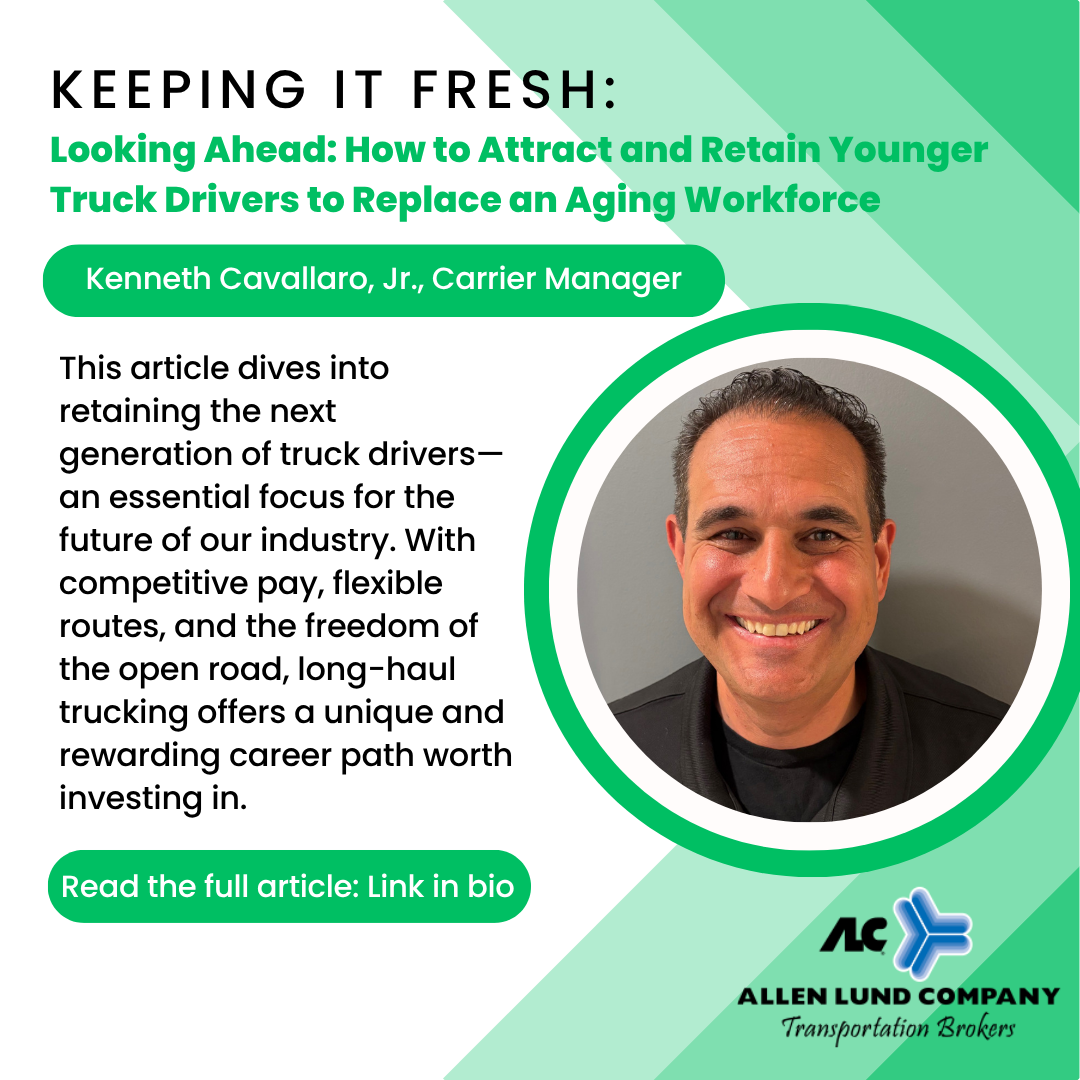
America’s supply chain depends on truck drivers to transport goods safely and efficiently across the country. As active members in the supply chain logistics industry, we know firsthand that the aging out of drivers can significantly impact operations and the timely delivery of goods. With the average age of truck drivers rising and fewer young adults entering the profession, is the industry doing enough to attract and retain young drivers to replace retiring older drivers?
The American Trucking Association estimates that there could be a shortage of at least 160,000 drivers by the year 2028. Addressing this gap requires a focused effort on recruiting young workers into the profession.
Truck driving can be a demanding career. Long hours, time away from family, and skyrocketing insurance costs (further complicated by higher premiums for younger, less experienced drivers) are significant roadblocks. Driving services, such as Uber and Lyft, offer greater flexibility with a reduction in time spent away from home or waiting to load or unload products.
So, how do we overcome these obstacles and attract more people to long-haul trucking? Fortunately, many asset-based companies are offering competitive benefits and improved wages. A recent study showed a 15.5% increase in driver wages per mile. One way to attract young drivers is by communicating the financial incentives of long-haul trucking to potential recruits, as well as maintaining viable wages and benefits in today’s market. Beyond the paycheck, truck driving offers a rare sense of freedom and autonomy — no desk, no daily micromanagement — just the open road and the opportunity to see the country while building a rewarding, independent career.
Organizations like NEXTGEN Trucking (NGT) work to promote trucking and logistics as rewarding career paths for young people. They partner with schools, educators, and industries to build and support high school and post-secondary CDL-drivers, diesel tech, and supply chain programs, connect students with employers, offer scholarships and resources, and celebrate student and industry achievements.
While stringent regulations are necessary for safety, the rigorous training and certification process can discourage potential drivers from entering the industry. Incentives such as sign-on bonuses, training assistance, and career milestone rewards could help attract and retain talent. In addition, we can improve work-life balance by leveraging technology to streamline driver routes and match owner-operators with hauls closer to their home base, allowing them more time with their families and reducing frustration from wasted miles. This type of flexibility and family-focused scheduling would appeal to today’s younger workforce and help reduce turnover long-term.
Taking care of that workforce is more than a want; it is a necessity. The next time you shop for fresh produce, clothing, or home goods, keep in mind the drivers that make it possible. Now is the time to make the changes that will attract and keep additional drivers in lifelong careers in the industry; otherwise, we face higher transportation costs, shipping delays, and a disrupted supply chain. By showing the next generation that truck driving isn’t just a job, but an opportunity to live life on your terms, with purpose and pride, we can reshape how the industry is seen and secure its future.
Read the original article here


